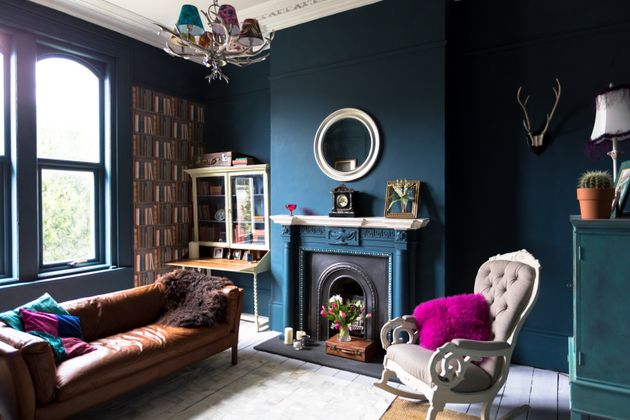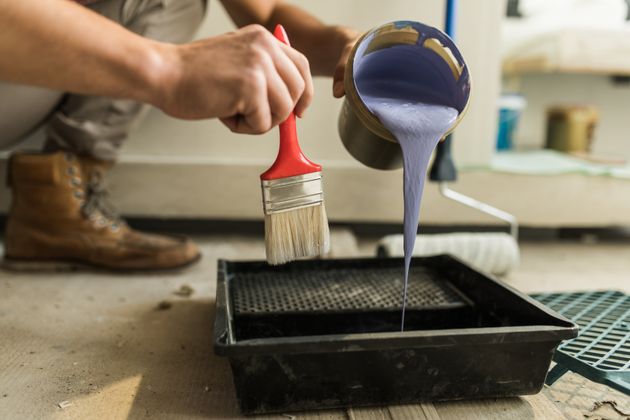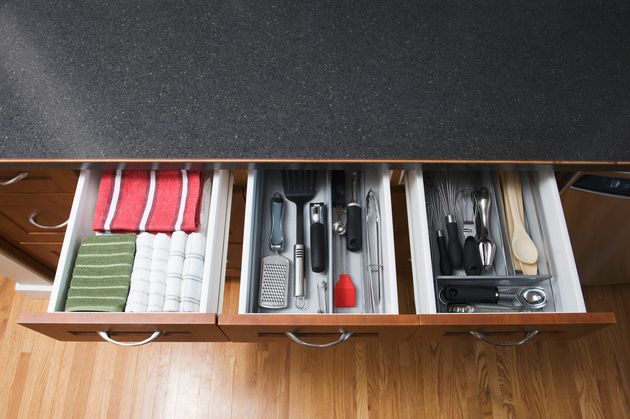If you’re set to move into a new home soon – and are knocking about the millennial age bracket – space is likely at a premium. Sure, city centre flats are notoriously pokey. But houses in less urban locations are dwindling in square feet, too: recent research, by LABC Warranty, found that the living rooms of modern homes are almost a third smaller than houses and apartments built in the 1970s.
From the Tiny House movement to “micro-homes”, people all over the world are trying to find solutions to the lack of living space. Radical solutions are interesting, however you can still make your traditional space stretch that bit further.
Here’s how…
1. Furniture choices matter

“Even without doing major work done to the property you live in, there are still measures you can take to try and create more space,” says Rachel Newcombe, editor of Fresh Design Blog.
“For example, you might want to reconsider your furniture choices and see if there are any other slightly smaller or more slim-line pieces you could buy instead. A large sofa may have looked lovely in a furniture showroom, but it might not be so practical in your living room.”
Interior designer Jade Maria says that her key tip is using furniture that is raised off the floor – for example, on thin legs. Also: mirrors.
“Mirrors are a great way to reflect light around the room as well as giving the illusion that a space is much bigger than it is. Use different sizes in different areas but I particularly love a full length or large round mirror. The bigger the mirror the bigger the illusion of space,” she says.
2. Get your paintbrush out

If you’re up for the job of repainting, Newcombe advises choosing light-reflecting shades such as pale grey.
“Try painting your walls, ceiling and skirting boards all in one single colour, as this can make a room feel more spacious.
“If you have a long narrow room, such as a hallway or landing, painting the skirting boards in a darker colour than the wall and ceiling creates a visual effect that naturally draws the eye and leads your focus to the rest of your home.”
3. Make structural changes

If you bought your property with the idea of making some structural changes, Newcombe says you might want to consider going open-plan by knocking down a wall either between the kitchen and living room, or dining room and living room to get the space you’re after.
4. Get smart with storage
Storage can be one of the most challenging aspects of living in a small place, but think about any areas of wasted space. It also forces you to have a long, hard look about any clutter.
“The space under the stairs can just become a dumping ground for shoes, toys or other clutter,” Newcombe says. “Having a cupboard built into the space can make it more functional. Or simply placing a piece of furniture there, such as a sideboard, cupboard or toy box can help provide vital storage.”
From a design point of view, Maria says think about buying furniture that has some form of storage built in, such as your bed, ottomans and sofa, and sideboard. Put hooks and rails inside your cupboards or the insides of doors, where possible.

5. Tackle your clutter
“Don’t clutter those worktops, sideboards, shelves and tables,” Maria says. “Keep them as clear as possible. Having just a few pieces out is so much more visually pleasing, neater and pulled together rather than everything everywhere taking up space and making it feel busy.”
Open shelving, which is popular in small spaces, only works when it isn’t cluttered, adds Newcombe. “Aim to opt for ‘less is more’, rather than trying to cram the shelves with all your crockery,” she says. Blitz the house every few days to keep any clutter spots building up.
By choosing furniture and storage options wisely and making use of a few visual tricks, you can make any room look and feel a bit more spacious – and a lot more stylish.
If home ownership is something that you’re thinking about but you’re struggling to get enough cash together for a deposit, then you need to know about Post Office Family Link™ mortgages, provided by Bank of Ireland UK. With a Post Office Family Link™ mortgage, a close family member (usually a parent or step parent) could help you raise a 10% deposit by borrowing the money against their own home (as long as it is mortgage-free). Find out more here.


